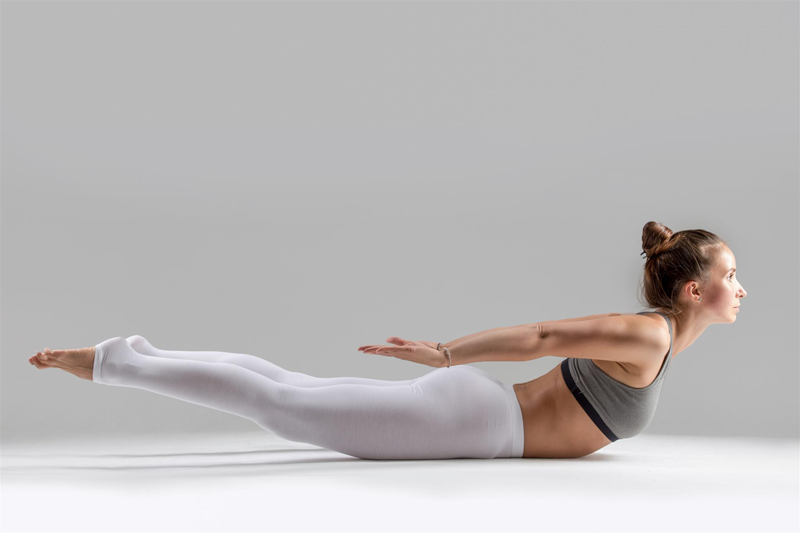Kripalu Yoga is a yoga discipline based on the Hatha style. Placing equal focus on breathing techniques, physical postures, and meditation, the style is ideal for those looking to get a taste of traditional yoga. Kripalu yogis are encouraged to listen and learn from their own body; because of this, Kripalu sessions are adapted to the ability of each individual. Teaching the basics of mind, body, and spirit, classes are suitable for students of all abilities. Though Kripalu boasts a range of physical benefits, it is packed full of emotional benefits, too. When practised regularly, it can be a source of spiritual and mental transformation, allowing yogis to change their daily life for the better. While beginners are recommended to attend a local class, experienced practitioners may prefer to practice independently. If you go for this option, it’s important to get your hands on some good-quality yoga gear before beginning. As the summer months are approaching, consider picking up some comfortable yoga shorts to keep you cool while you practice. In this article, we explore Kripalu Yoga in more detail.
Philosophy
The philosophy of Kripalu Yoga is fairly simple. Focussing on the mind, body, and spirit, the goal of the style is to excel in these three areas. Regular Kripalu practice should result in a healthy and strong body and peaceful mind. Additionally, the discipline brings practitioners to the highest spiritual state – self-realisation. Below, you can find the full description of the philosophy, taken from the Kripalu Yoga Teacher Training Manual.
‘The goal of traditional yoga is to bring a practitioner to the highest spiritual state called self-realisation. The goal of Kripalu yoga is to develop a healthy and strong body, an open and caring heart, and a peaceful and clear mind. Kripalu Yoga recognises that we are born divine and are inherently capable of accessing our spiritual nature.’
History and Origins
Kripalu Yoga has been around since the 1980’s. The style was founded by a yoga guru named Amrit Desai, who is believed to have named the style after his former yoga instructor, Sri Kripalvananda. When trans-lated into English, the word ‘Kripalu’ means ‘compassion’. Many yogis believe that this also influenced the name of the discipline. At the end of most yoga classes, students use the Sanskrit word ‘Namaste’. When translated, this means ‘I thank you’. However, Kripalu classes use the Hindi translation, ‘Jai Bhagwan’, instead. Desai opened the original centre of Kripalu Yoga in Massachusetts, though studios can now be found worldwide.
Practice
Kripalu classes can now be found in most major cities. While each session is unique, most follow the same structure. Typically, Kripalu sessions start with some instructor-led breathing exercises. In Sanskrit, these are referred to as pranayamas. Once everybody is ready, they will perform some gentle stretches to pre-pare the muscles for the next part of the session. Next, students will move on to a series of physical pos-tures; in Sanskrit, these are referred to as ‘asanas’. The asana sequence will vary between studios, though most classes incorporate a variety of different postures. Once this part has been completed, practitioners will partake in a few minutes of meditation. This stage is important as it helps students reflect on the class and warm down before their journey home.
Typically, studios will hold a mixture of different classes based on ability. Beginners classes are usually shorter in duration to allow the muscles to stretch gradually. This allows practitioners to build strength and flexibility without the risk of injury. Advanced sessions are usually around 1-hour long. During the class, experienced yogis are encouraged to flow their postures into one another to maximise the health benefits. Though many studios have separate classes for beginners, the adaptable nature of the discipline means that any class can be adapted to different abilities. If you’re thinking of joining a studio without a beginner class, just make sure to contact your instructor before-hand to ensure that the class is suitable.
Benefits
Like all yoga styles, Kripalu Yoga boasts a variety of benefits. Emotionally, the practice can improve self-confidence. When practised regularly, students will learn techniques that once seemed impossible. Over time, this will remind yogis that they can achieve anything if they put in the time. Many students believe that the self-empowering nature of the style is what makes Kripalu so transformative.
Physically, Kripalu strengthens the muscles whilst improving flexibility. As the style is adaptable, it can be tailored to suit physical limitations. With this in mind, the style can be used to aid recovery after a physical injury. Additionally, the gentle pace of Kripalu makes it suitable for those with muscle pain. With the help of a qualified instructor, regular practice can minimise discomfort from all the major muscle groups.
In Summary
Benefitting the physical and emotional body, Kripalu yoga can help a wide variety of health conditions. Additionally, the style can combat issues such as fatigue, poor digestion, and insomnia. Whether you’re hoping to use the discipline to strengthen your muscles or you’re more interested in improving your confidence, regular Kripalu practice can help you to achieve your goal. While experienced yogis can practice independently, beginners are advised to attend a local class. There, a certified instructor can advise you on the best techniques to use. As well as preventing injury, this will allow you to gain maximum benefit from the session. Before attending your first class, it’s worth making sure you’ve got the right gear. To remain comfortable throughout the session, consider picking up a yoga bra with a good-quality support.

